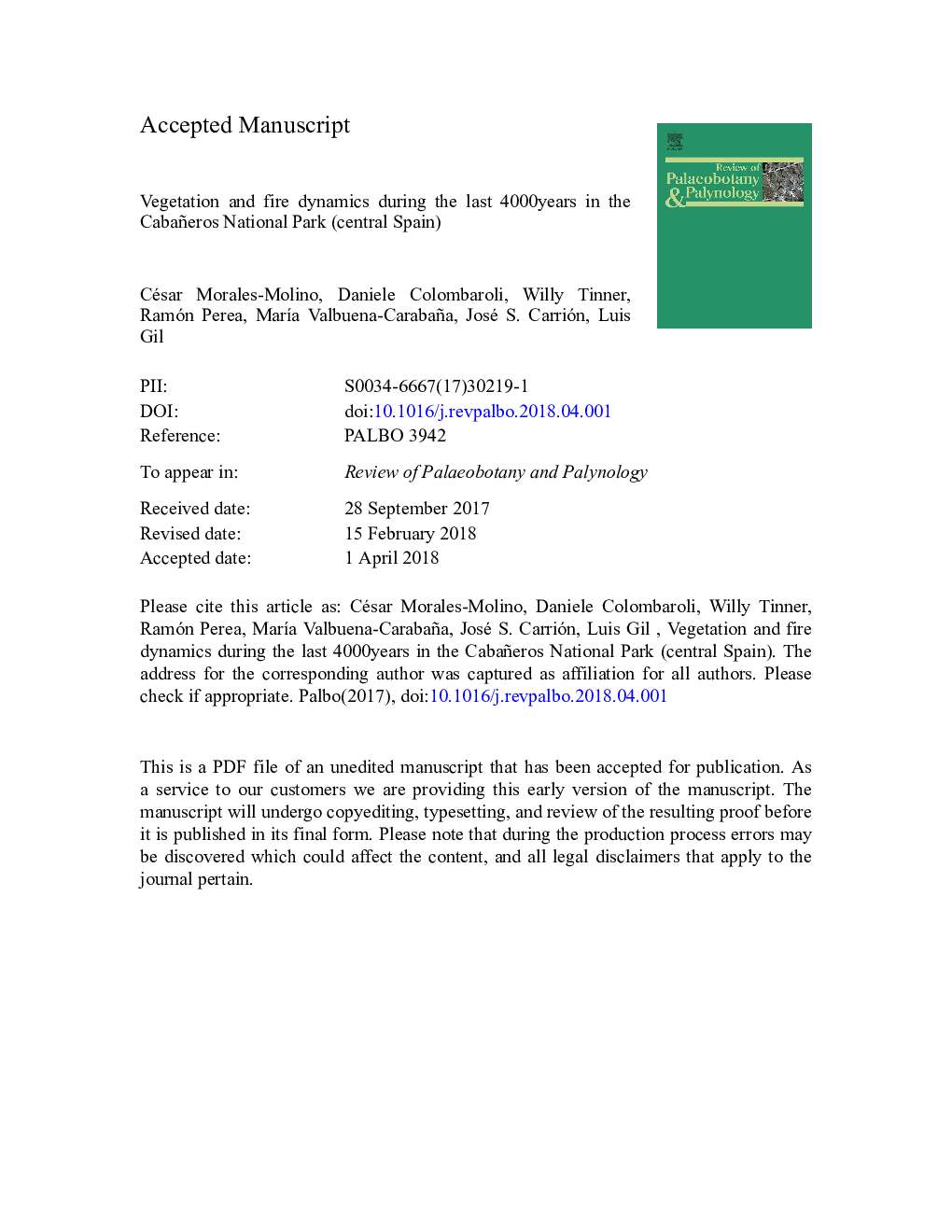| کد مقاله | کد نشریه | سال انتشار | مقاله انگلیسی | نسخه تمام متن |
|---|---|---|---|---|
| 8916624 | 1642444 | 2018 | 67 صفحه PDF | دانلود رایگان |
عنوان انگلیسی مقاله ISI
Vegetation and fire dynamics during the last 4000Â years in the Cabañeros National Park (central Spain)
دانلود مقاله + سفارش ترجمه
دانلود مقاله ISI انگلیسی
رایگان برای ایرانیان
کلمات کلیدی
موضوعات مرتبط
مهندسی و علوم پایه
علوم زمین و سیارات
فسیل شناسی
پیش نمایش صفحه اول مقاله

چکیده انگلیسی
The Holocene vegetation dynamics of low- and mid-altitude areas of inland Iberia remain largely unknown, masking possible legacy effects of past land-use on current and future ecosystem trajectories. Here we present a 4000-year long palaeoecological record (pollen, spores, microscopic charcoal) from a mire located in the Cabañeros National Park (Toledo Mountains, central Spain), a region with key conservation challenges due to ongoing land-use changes. We reconstruct late Holocene vegetation history and assess the extent to which climate, land-use and disturbances played a role in the observed changes. Our results show that oak (Quercus) woodlands have been the main forested community of the Toledo Mountains over millennia, with deciduous Quercus pyrenaica and Quercus faginea more abundant than evergreen Quercus ilex and Quercus suber, particularly on the humid soils of the valley bottoms. Deciduous oak woodlands spread during drier periods replacing hygrophilous communities (Betula, Salix, hygrophilous Ericaceae) on the edges of the mire, and could cope with fire disturbance variability under dry conditions (e.g. ca. 3800-3000-1850-1050Â BC- and 1300-100Â cal BP-AD 650-1850-) as suggested by regional palaeoclimatic reconstructions. Pollen and coprophilous fungi data suggest that enhanced fire occurrence at ca. 1300-100Â cal BP (AD 650-1850) was due to deliberate burning by local people to promote pastoral and arable farming at the expense of woodlands/shrublands under dry conditions. While historical archives date the onset of strong human impact on the vegetation of Cabañeros to the period at and after the Ecclesiastical Confiscation (ca. 150-100Â cal BP, AD 1800-1850), our palaeoecological data reveal that land-use was already intense during the Arab period (ca. 1250-900Â cal BP, AD 700-1050) and particularly marked during the subsequent City of Toledo's rule (ca. 700-150Â cal BP, AD 1250-1800). Finally, we hypothesize that persistent groundwater discharge allowed the mires of the Toledo Mountains to act as interglacial hydrologic microrefugia for some hygrophilous woody plants (Betula, Myrica gale, Erica tetralix) during pronounced dry spells over the past millennia.
ناشر
Database: Elsevier - ScienceDirect (ساینس دایرکت)
Journal: Review of Palaeobotany and Palynology - Volume 253, June 2018, Pages 110-122
Journal: Review of Palaeobotany and Palynology - Volume 253, June 2018, Pages 110-122
نویسندگان
César Morales-Molino, Daniele Colombaroli, Willy Tinner, Ramón Perea, MarÃa Valbuena-Carabaña, José S. Carrión, Luis Gil,